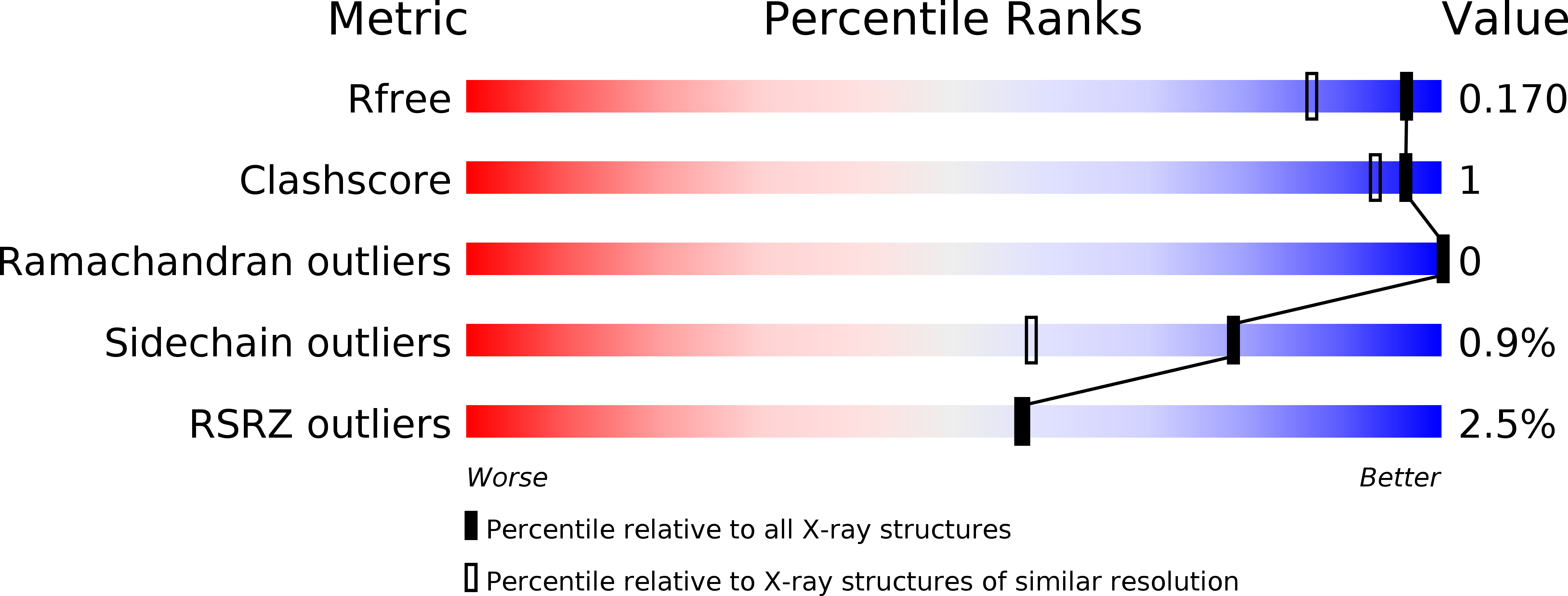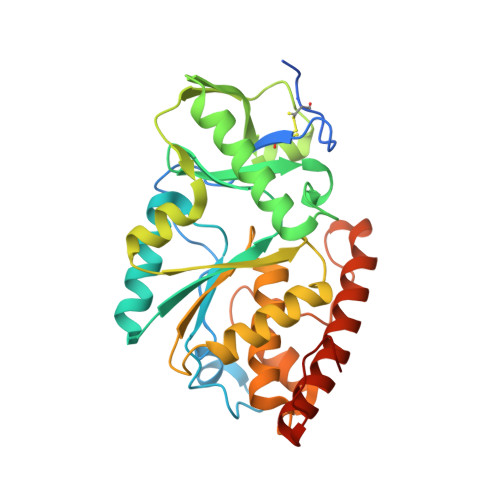A Type IV Translocated Legionella Cysteine Phytase Counteracts Intracellular Growth Restriction by Phytate.
Weber, S., Stirnimann, C.U., Wieser, M., Frey, D., Meier, R., Engelhardt, S., Li, X., Capitani, G., Kammerer, R.A., Hilbi, H.(2014) J Biol Chem 289: 34175-34188
- PubMed: 25339170
- DOI: https://doi.org/10.1074/jbc.M114.592568
- Primary Citation of Related Structures:
4TVV - PubMed Abstract:
The causative agent of Legionnaires' pneumonia, Legionella pneumophila, colonizes diverse environmental niches, including biofilms, plant material, and protozoa. In these habitats, myo-inositol hexakisphosphate (phytate) is prevalent and used as a phosphate storage compound or as a siderophore. L. pneumophila replicates in protozoa and mammalian phagocytes within a unique "Legionella-containing vacuole." The bacteria govern host cell interactions through the Icm/Dot type IV secretion system (T4SS) and ∼300 different "effector" proteins. Here we characterize a hitherto unrecognized Icm/Dot substrate, LppA, as a phytate phosphatase (phytase). Phytase activity of recombinant LppA required catalytically essential cysteine (Cys(231)) and arginine (Arg(237)) residues. The structure of LppA at 1.4 Å resolution revealed a mainly α-helical globular protein stabilized by four antiparallel β-sheets that binds two phosphate moieties. The phosphates localize to a P-loop active site characteristic of dual specificity phosphatases or to a non-catalytic site, respectively. Phytate reversibly abolished growth of L. pneumophila in broth, and growth inhibition was relieved by overproduction of LppA or by metal ion titration. L. pneumophila lacking lppA replicated less efficiently in phytate-loaded Acanthamoeba castellanii or Dictyostelium discoideum, and the intracellular growth defect was complemented by the phytase gene. These findings identify the chelator phytate as an intracellular bacteriostatic component of cell-autonomous host immunity and reveal a T4SS-translocated L. pneumophila phytase that counteracts intracellular bacterial growth restriction by phytate. Thus, bacterial phytases might represent therapeutic targets to combat intracellular pathogens.
Organizational Affiliation:
From the Max von Pettenkofer Institute, Department of Medicine, Ludwig-Maximilians University Munich, 80336 Munich, Germany.


















